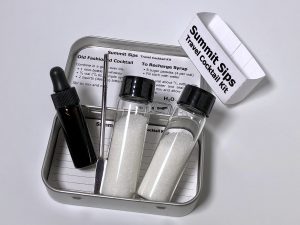
Anodyne
 The Anodyne Cocktail—for whatever ails you. The name means something that alleviates or eliminates pain, so it could apply to any drink, but in this case it was chosen for a medicinal combination of ingredients first tried by Wesley Moore in 2009 when it appeared on Chuck Taggart’s Looka! Gumbo Pages weblog. According to Chuck, the cocktail was inspired by the Perfect Martini which is a Martini made using equal portions of both sweet and dry vermouth.
The Anodyne Cocktail—for whatever ails you. The name means something that alleviates or eliminates pain, so it could apply to any drink, but in this case it was chosen for a medicinal combination of ingredients first tried by Wesley Moore in 2009 when it appeared on Chuck Taggart’s Looka! Gumbo Pages weblog. According to Chuck, the cocktail was inspired by the Perfect Martini which is a Martini made using equal portions of both sweet and dry vermouth.
The first thing you might notice is that this drink doesn’t use a typical sweet vermouth, nor a typical dry one. It wouldn’t be very innovative if it did. Instead, the substitutions are far more interesting and the proportions are such that they setup a wonderful balance between them. As simple as it sounds, it’s much more than a basic substitution riff. What we have with the Anodyne is another example of how a gin cocktail doesn’t have to really taste like gin at all. The transformation that occurs can surprise and amaze you without using any fruit juice, herbs or soda. This is a true cocktail that hits all the marks and does so gracefully. It’s a great Drink of the Week to end the year, so take a look at the recipe and we can get into the details.
Anodyne by Wes Moore
2 oz Beefeater gin
1 oz Lillet Blanc
.5 oz Punt e Mes
3 dashes Regan’s Orange Bitters No. 6Combine in a mixing glass with ice. Stir 30 seconds and strain into a chilled cocktail glass. Garnish with a flamed orange peel.
First and foremost, this is a gin cocktail. But as we said, you might not know it. It’s also an all-spirits drink like its Martini predecessor. But it is that combination of modifiers that really sets it apart. Let’s start with the Lillet. This has appeared in other recipes such as the Corpse Reviver No. 2, and the Vesper. If you recall, Lillet Blanc is a fortified white wine aperitif which resembles a dry or French vermouth. However, Lillet is actually somewhat sweet and carries an orangey character. This makes it a popular substitute for dry vermouth and a great way to put a flavorful twist on an old classic. That’s what is happening here to create something with a bit more interest.
What would have been Italian sweet vermouth in a Perfect Martini is actually Punt e Mes in this drink. We really enjoy Punt e Mes because it provides the bold complexity we demand from a good sweet vermouth, but it does so with a bitterness that has an almost chocolatey appeal. At risk of taking over the drink, the portion is reduced to just a half ounce allowing the lighter Lillet to poke through while still providing that earthy backbone. Up to this point, we almost have the makings of the Edgewood cocktail, but we will stop short of adding grapefruit juice, opting for a few dashes of orange bitters to bring everything together.
By now, you should recognize the alchemy at play with this one. The deep and fantastic bitter flavors of the Punt e Mes are enhancing the Lillet’s lighter, sweeter character, and together they transform the botanicals of the gin for a very tasty result. Now, to top it off you’ll want to garnish with a flamed orange peel. Slice off a small disk from the peel of a fresh orange, hold it close to a lit match and snap it sharply between your fingers letting the orange oil from the zest spray through the flame and over the surface of the drink. Check out the Blood and Sand cocktail for more details. If you do it right and your orange is fresh, the oils will ignite before landing on the drink. It’s more than just a flashy display. The fragrant oil plays an important role. Wipe the orange peel around the rim of the glass and drop it in.
Chuck Taggart suggests leaving the ingredients as-is. In other words, use Beefeater if at all possible. Other gins may not stand up as well. Also, Lillet and Punt e Mes are both unique but pretty easy to find. You could certainly change things up with substitutions, but given the unique combination that happens with these ingredients, you would be creating something different. That’s not necessarily a bad thing, just not the same thing. So, how does it taste? We were expecting it to be bold and strong but we are surprised at its subtlety. Each element mingles perfectly without one component outshining another. There is a slight bitterness but it’s balanced by the other flavors. It has all of the complexity of a Negroni without Campari’s strong bitterness. By that description, if you like a Negroni, you will like this. If you don’t like a Negroni, you will like this.
Happy New Year!
From The Shop:
Recommended:
You Might Also Like:
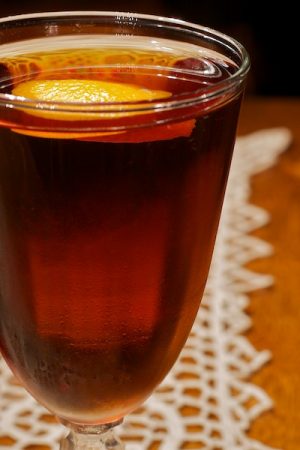
Anodyne

Margarita
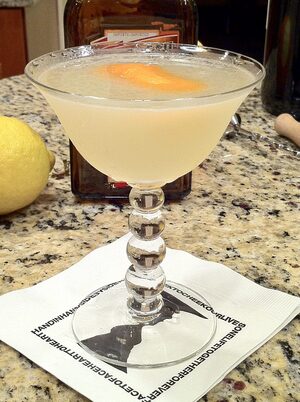
Corpse Reviver #2
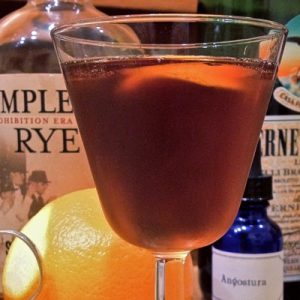
Toronto
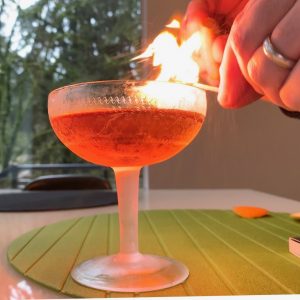
Jaguar
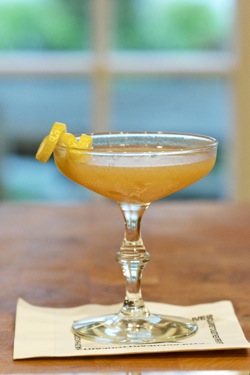
Japanese

Chestnut Cup
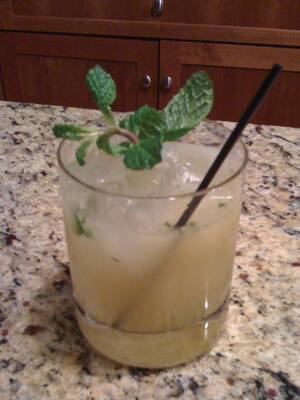
Whiskey Smash
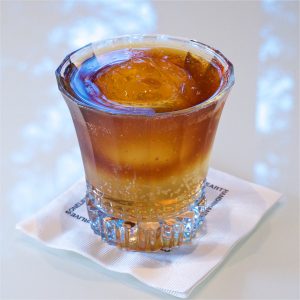
Cold Brew & Tonic
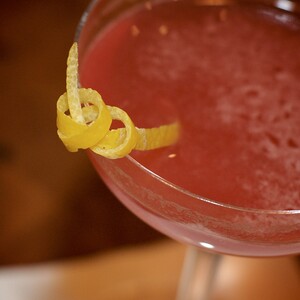
The Scofflaw
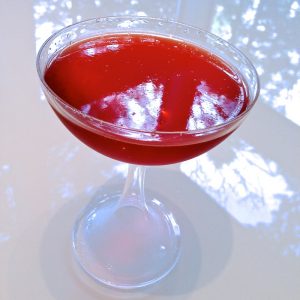
Eeyore’s Requiem

20th Century Cocktail
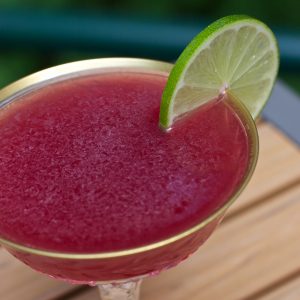
Sea of Cortez

Death in the Gulf Stream

Drink with No Name: The Harrington
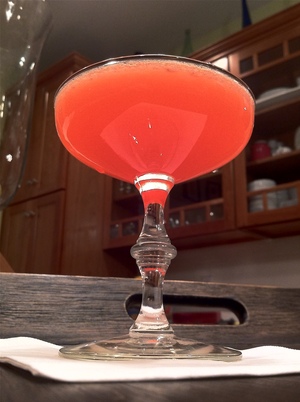
Paper Airplane

Stinger

Cranston

Fernelderwood

Basil Oil Garnish
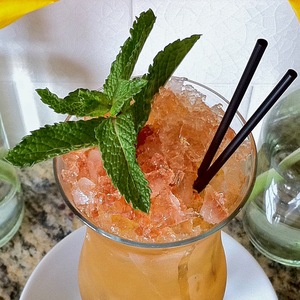
Queen’s Park Swizzle
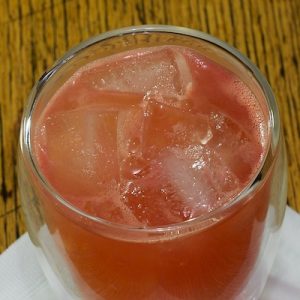
Saw Tooth
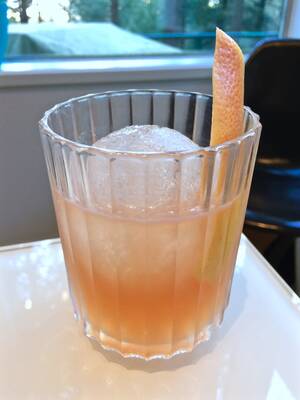
Bicycles & Baskets
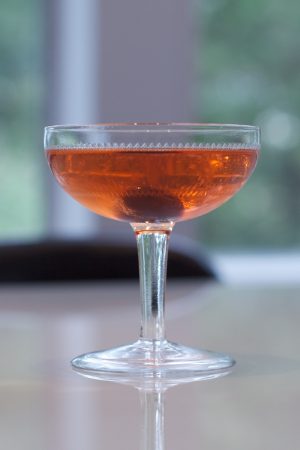
Metropole

Breakfast Collins
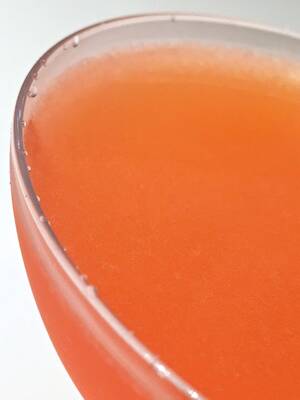
Naked and Famous
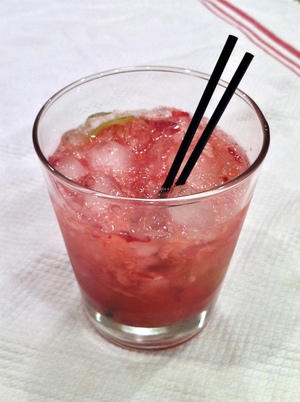
Cherry Caiprissima
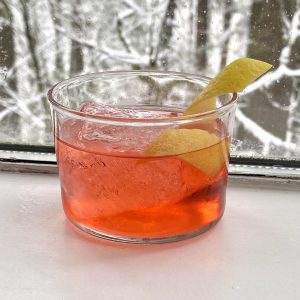
Jalisco Stroll

Communist
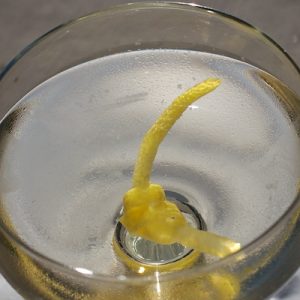
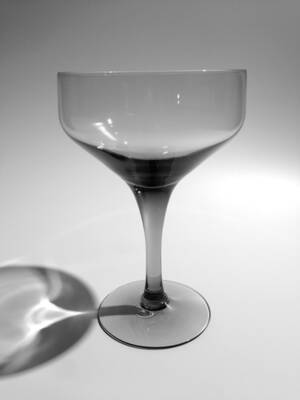


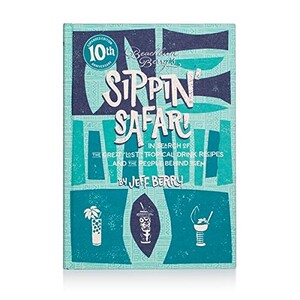

Randy, Another all spirits drink for me to try! Thanks…. Punt e Mes is a regular player in my cabinet….I have been told it is a combo of an amaro and carpano’s antica formula….is this correct? It really elevates a Negroni, and makes for a nice chage in Manhattans and it’s variations. I was turned on to it several years ago in las Vegas at B and B in the Venetian. Regarding the lillet…what is the technical difference between this and a Blanco Vermouth such as MandR Bianco or Dolin Blanc and could these be used in sub for this… Read more »
Hey, Scott, according to Branca, Punt e Mes started in the Carpano Bottega in 1870 as vermouth with a dose of china (kina). I suppose back in those days they might have been drinking Anitica Formula created some 80 years earlier, so your description of Antica with Amaro is probably not far from the truth. As for Lillet Blanc versus French vermouth, both are made using grape wine fortified with alcohol. Lillet is a ‘tonic wine’ flavored with sweet liqueur (citrus and cinchona) while vermouth is aromatized with various dry ingredients including herbs, roots, barks (historically among them, ‘vermut’ or… Read more »
I’ve only just stumbled across this page … where the hell have I been?! Fantastic article, thanks a million! Wesly is touched and honored. :)
I’m also in love with your glassware. Jealous!
So very glad you’ve enjoyed the cocktail. Thanks for sharing it!
Thanks, Chuck and Wes for visiting and taking the time to comment. The honor is all mine.